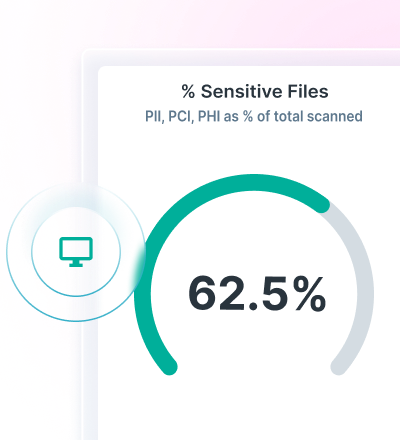How AI is Fueling a New Wave of Black Friday Scams
0 min read

Lydia McElligott
Black Friday has always been a prime opportunity for cybercriminals. This year, the threat is elevated. Attackers are now using AI to craft phishing emails, clone online stores and execute scams that are nearly indistinguishable from legitimate holiday deals. With shoppers moving fast and trusting what looks familiar, these tactics are working.
Here’s what you need to know before you click “Buy Now.”
Key Takeaways
- Black Friday scams surge every year as cybercriminals exploit urgency, discount pressure, and brand familiarity.
- AI tools now make phishing emails, fake websites, and social media ads look more realistic than ever.
- Amazon, Temu, and luxury brands are among the most impersonated during the holiday season.
- Verifying sender domains, checking URLs, and questioning unbelievable discounts can prevent most scams.
The Rise of AI-Enhanced Black Friday Scams
Every year, shoppers start the season the same way: scanning their inboxes for early deals and limited-time offers. Cybercriminals know this, and they tailor campaigns to blend seamlessly into the noise.
Today’s scams look different because AI has changed the playing field.
Attackers can now produce:
- Phishing emails identical to brand templates
- Entire retail websites cloned in minutes
- Fake product reviews and social ads
- Compelling “small business” storefronts that don’t exist
These tools allow even low-skill attackers to produce scams that feel polished and trustworthy, increasing the likelihood that shoppers will click without hesitation.
How Black Friday Scams Work
Most Black Friday scams follow a predictable pattern: impersonate a trusted brand, present a compelling discount, and create urgency.
But what makes today’s attacks dangerous is how closely they mirror real retail behavior. Retailers genuinely send early access emails, shipping notifications, special codes, and last-chance reminders. Attackers lean on this familiarity—then add AI polish to erase the usual red flags.
Amazon Phishing: The Holiday Season’s Most Common Trap
For many shoppers, the first scam of the season arrives disguised as an Amazon alert. The emails often look exactly like the ones people expect to receive—deal announcements, shipping notices, or account updates.
One example, styled as an early Black Friday teaser, promised exclusive deals to anyone who clicked.

Fig. 1: Phishing email disguised as carefully selected Black Friday deals
Another went further, offering unrealistic incentives like €1000 vouchers and brand-new iPhones.

Fig. 2: Fake Black Friday scam offering unrealistic prizes
These scams succeed because the timing feels right. Shoppers are already primed for discounts, and the branding looks flawless. All it takes is one click.
Temu “Mystery Box” Scam Targeting Black Friday Shoppers
Temu’s rapid rise makes it an irresistible brand to impersonate. Attackers capitalize on its fast-fashion appeal, often using “mystery box” promotions to spark curiosity.
One message, titled “Temu Mystery Box – Black Friday Edition,” appeared to come from a legitimate Temu address.

Fig. 3: Temu Black Friday phishing email
But the email headers told a different story:

Fig. 4: Corresponding email header shows spoofed sender
This mismatch between the “friendly” From line and the actual sending server is common. Many victims never think to inspect the header—making spoofing one of the most effective holiday tactics.
This spoofing technique, where the “From” address looks legitimate but the underlying servers are suspicious, is a common tactic in phishing campaigns. It allows attackers to appear trustworthy while directing recipients to malicious websites or links.
Luxury Goods: A High-Value Target for Fake Online Stores
Luxury scams thrive during Black Friday because shoppers believe this is the one time each year when prices actually drop. Attackers exploit this expectation with emails promoting rock-bottom deals.
A message advertising “Rolex Starting at $250” is a perfect example:

Fig. 5: Rolex phishing email
Another campaign promised Louis Vuitton bags for $200—complete with branding and elegant visuals.

Fig. 6: Louis Vuitton phishing email
Victims who click through land on surprisingly polished websites:

Fig. 7: Fake luxury watch store

Fig. 8: Fake luxury handbag website
These sites mimic the layout of real luxury retailers, but behind the scenes, they lack the basics: privacy policies, secure checkout, and legitimate corporate information. AI tools make them look real; desperation for a good deal does the rest.
Fake online shops often share common characteristics. One clear warning sign is unrealistically low prices, far below market value. Many of these sites are poorly developed, lacking essential elements like a privacy policy, contact information, an “About Us” page, or links to social media profiles.
Typo squatting is another tactic, where the website address is a slightly misspelled version of a legitimate domain (for example, “Amaz0n.com”). Finally, scammers frequently use urgency tactics, such as “Only 3 left!” or “Deal ends in 5 minutes!” to pressure shoppers into acting before they have time to think.
Social Media Ads: A Fast-Growing Vector for Holiday Shopping Fraud
Not all scams arrive in the inbox. Increasingly, shoppers encounter them on TikTok, Instagram, and Facebook—often during casual scrolling.
Attackers purchase short-lived ads designed to blend into the platform’s native style, making them far harder to spot than traditional web banners.
Here are two examples:

Fig. 9: TikTok ad and linked fake Brown Thomas website

Fig. 10: TikTok ad and linked online store
These ads often lead to the same kind of cloned websites used in phishing attacks, except the entry point feels organic: a stylish video, a trending sound, or a flash-sale countdown. That psychological familiarity is exactly what attackers count on.
How to Spot a Black Friday Scam
Recognizing a scam is easier when you know what to look for. Although techniques vary, nearly all attacks share core warning signs:
1. Inspect the sender’s email address
Most scams fall apart under close domain inspection. Look for swapped characters, odd extensions, or unrelated domains.
2. Hover over links before clicking
If the URL looks unusual, points to a random string of characters, or fails to match the brand’s domain, assume it’s malicious.
3. Evaluate website legitimacy
Missing privacy policies, strange URLs, and unsecured payment options are classic indicators.
4. Question dramatic discounts
Rolex watches and designer handbags almost never drop to bargain-bin prices—even during Black Friday.
5. Be cautious with high-pressure language
Scammers love countdown timers, scarcity alerts, and “last chance” warnings.
6. Use secure payment methods
Credit cards offer better fraud protection than debit cards, wires, or P2P apps.
How to Stay Safe While Holiday Shopping
A few deliberate habits can stop most holiday scams:
- Visit retailer websites directly instead of clicking promotional links.
- Enable MFA on your shopping and email accounts.
- Use credit cards for stronger fraud protection.
- Check your statements regularly during the shopping season.
- Keep software up to date to reduce exposure.
- Slow down. Attackers rely on speed; defending yourself requires the opposite.
Final Thoughts: Awareness Is the Best Defense
Cybercriminals are using AI to make Black Friday scams more persuasive, more realistic, and more dangerous than ever. A few seconds of scrutiny—checking the sender, reviewing the URL, questioning the offer—can prevent a costly mistake.
Enjoy the deals, but shop with intention. When an offer feels even slightly suspicious, trust your instincts. Caution is the best bargain of the season.
IOCs
- hxxps://www.luxy-rox[.]com
- hxxps://www.lsrox[.]com
- hxxps://www.lux-lvs[.]com
- hxxps://makeup-us[.]shop
- hxxps://brownthomas.onlineoa[.]shop
- hxxps://black-fridaydeals[.]com
- hxxps://dealwatchdogs[.]net/*
- hxxp://redhouserecords[.]info/*
- hxxp://agilebiz[.]net/*
- hxxps://www.skqmmp8trk[.]com/*
- hxxps://s.wwwhotsalebooks[.]ru/*
- hxxp://q.startimes[.]me/*
- hxxps://www.skltrskcs[.]com/*
- hxxps://cc.xn--80aaae9btead2a[.]xn--p1ai/*
- hxxps://eee.xn--90askabadrf6a[.]xn--p1ai/*
- hxxps://s.xn--90ahaa0atead2a[.]xn--p1ai/*
- hxxps://sss.xn--90araabtead2a[.]xn--p1ai/*
- hxxps://x.xn--80aclvcqeaduhb[.]xn--p1ai/*
- hxxps://is3.cloudhost[.]id/bdmailweb/*
- hxxps://is3.cloudhost[.]id/s3-storage/*
- hxxps://is3.cloudhost[.]id/sstorage/*
- hxxps://storage.googleapis[.]com/bal02fvxns64kjn58b16fdvxs78kj/medosbmitlsokolz7di54dscxkm7gbf[.]html
- hxxps://storage.googleapis[.]com/dec8kmnc5saf2gbc54kmgh6kladcz43h/amzosbmitlsokolz7di54dscxkm7gbf[.]html
- hxxps://storage.googleapis[.]com/dsvkdhsbvgsdivgsiudgvsiudvgbhsd/medosbmitlsokolz7di54dscxkm7gbf[.]html
- hxxps://storage.googleapis[.]com/eawz7j02sd43hnsdcz62hdl/amaosbmitlsokolz7di54dscxkm7gbf[.]html
- hxxps://storage.googleapis[.]com/sdmailweb/AMMMZKJAHZZJHEJ___JAHJEHDS[.]html
- hxxps://storage.googleapis[.]com/sdmailweb/AMZJEHDJSDE__JAEYDS[.]html
- hxxps://storage.googleapis[.]com/sdmailweb/NAMEJZKKEJD___NAMEJZ[.]html
- hxxps://storage.googleapis[.]com/sdmailweb/NAMZMLENNNNNZM__NNAKL[.]html
- hxxps://storage.googleapis[.]com/sdmailweb/NOPERHGEHDNNNNN___NOPERHGHDG[.]html
- hxxps://storage.googleapis[.]com/sdmailweb/OPEHRDHGHEHZGS___OPEHZGDSFSF[.]html

Lydia McElligott
Read more articles by Lydia McElligottLydia McElligott is a Security Researcher with the Forcepoint X-Labs Threat Research team. She focuses on researching cyberattacks which target the web and email, particularly focusing on URL analysis, email security and malware campaign investigation.
- 2025 Future Insights eBook
In the Article
- 2025 Future Insights eBookRead the eBook
X-Labs
Get insight, analysis & news straight to your inbox

To the Point
Cybersecurity
A Podcast covering latest trends and topics in the world of cybersecurity
Listen Now









